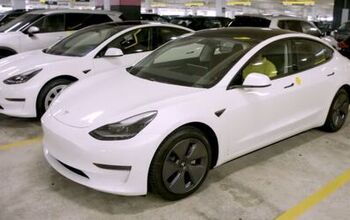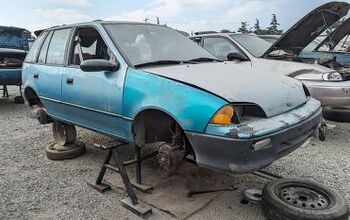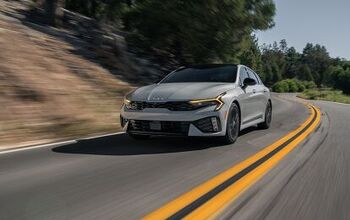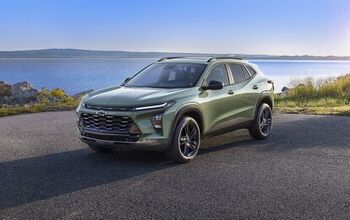The Hell With Political Correctness; Angry Bob is Back
With 2007 gasping its last breath, the Detroit Free Press asked local civic and industry leaders for their thoughts on the upcoming year. GM's Slick Rick Wagoner took the conservative approach and wished for "an end to the housing and auto recessions in the U.S. in 2008; a comprehensive U.S. energy policy, and continued success in emerging markets." Mark "The Mullet" Fields from FoMoCo took an equally optimistic view, hoping "we don't continually talk ourselves into a recession" and wishing "cars and crossovers will outsell trucks and SUVs for the first time in many years." But every auto journalist's favorite sound bite machine Maximum Bob Lutz didn't mince words: "Now that we have the 35 miles-per-gallon fuel economy mandate by 2020, I am hoping that in 2008 'Professor Doktor' David Friedman (research director, clean vehicles program, Union of Concerned Scientists) and his 'highly-qualified' band of allegedly concerned, self-proclaimed scientists will turn their energy toward showing the world's automotive industry exactly how those numbers, using existing technology and 'costs of a few hundred dollars at the most' can be attained with a vehicle selection that even remotely resembles the cars and trucks Americans want to buy today." Go get 'em Bob!
More by Frank Williams


































Comments
Join the conversation
Quasi, So you now agree that smaller IS more efficient? And, yes, zoomy will not work for land yachts. Detroit knows how to make those so I would not suggest they learn to do so. (I think they are presently squeezing every ounce out of that particular pile of grapes). I was making a suggestion on how to build a more efficient car that is fun to drive so it will sell. Honda and Mazda can make cars like this, and I suspect they will start gaining market share.
Quasimondo, With respect to the 80 lbs difference, "It could be a number of things that are more than feature-list deep..." Like lighter structural members? They're going to do that and not make the engine lighter, too? And 80 lbs altering the balance in a luxury car isn't going to be seen as a big deal (it's not like that becomes an 8% difference in f/r weight distribution; you'd get a bigger shift adding a rear seat passenger). Be that as it may, the most significant difference between the two cars is the 1.0L displacement difference and, as near as I can tell, it's the only one. And the truly smaller engine gets fuel economy that can't be explained by the weight savings; it's the improved efficiency do to the smaller engine. By the way, I believe that car 0-60s in under 8 seconds with the smaller engine, which would be good enough (and then some) for me. As for your counter-suggestion of the BMW 328/335, one of those is turbo'ed and the other is not. That's hardly the same kind of comparison (and the "larger" model, surprise, gets worse fuel economy). Face it, the earlier advice to win on fuel economy by dialling back on the horsepower wars is good advice that Detroit could implement quickly.
I finally tracked it down. The service weight for the IS350's engine is 180kg, the service weight for the IS250's engine is 177kg. http://pressroom.com.au/press_kit_detail.asp?clientID=3&navSectionID=13&categoryID=1000&kitID=116#1781 http://pressroom.com.au/press_kit_detail.asp?clientID=3&navSectionID=13&categoryID=1000&kitID=76#1349 Wherever the weight differences are, it's not found in the engines. I'll admit, I did mess up by including the BMW's.